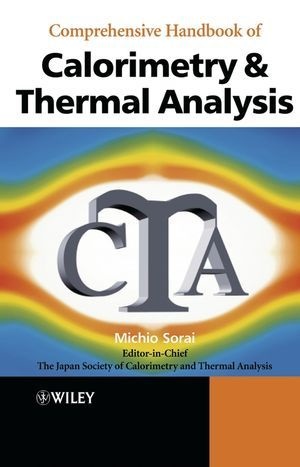Read more
Informationen zum Autor The Japan Society of Calorimetry and Thermal Analysis and Michio Sorai are the authors of Comprehensive Handbook of Calorimetry and Thermal Analysis, published by Wiley. Klappentext One of the field's leading leading research centers has produced an essential and up-to-date resource covering two fields not normally brought together in the literature. Professor Sorai is a world-recognised expert in the field of thermodynamics and leads key researchers to provide complete coverage of the subject without overloading the reader.* Comprehensive survey with practical examples* Provides coverage of principles, experimental methods, data analysis, databases and applications* Include applications in many disciplines, such as biochemistry, pharmacy, food, polymers, engineering and the fine chemical industries, in both industry and academia Zusammenfassung Discussing the field of thermodynamics, this book provides coverage of principles, experimental methods, data analysis, databases and applications; and, includes applications in many disciplines, such as biochemistry, pharmacy, food, polymers, engineering and the fine chemical industries, in both industry and academia. Inhaltsverzeichnis Preface. Acknowledgements. List of Contributors. Part I PRINCIPLES OF CALORIMETRY AND THERMAL ANALYSIS. 1.1 Calorimetry. 1.1.1 Overview. 1.1.2 Thermodynamic quantities characteristic of multi-component system. 1.1.3 Thermodynamic quantities characteristic of surface and interface. 1.1.4 Thermodynamic quantities in chemical reactions. 1.1.5 Thermodynamics of non-equilibrium states. 1.1.6 Biothermodynamics. 1.2 Thermal Analysis. 1.2.1 Overview. 1.2.2 Thermal analysis for chemical reactions. 1.2.3 Thermal analysis for mechanical properties. 1.2.4 Dynamic viscoelastic phenomena and thermal analysis. 1.2.5 Reaction kinetics in the solid state. 1.2.6 Periodic heating method. Part II EXPERIMENTAL METHODS. 2.1 Temperature Measurement in Thermal Study. 2.2 Principles and Methods of Calorimetry. 2.2.1 Classification and basic principles of calorimeters. 2.2.2 Adiabatic heat capacity calorimetry. 2.2.3 Heat capacity calorimetry by relaxation method. 2.2.4 AC calorimetry. 2.2.5 Laser-flash calorimetry. 2.2.6 High-temperature calorimetry. 2.2.7 Low-temperature calorimetry. 2.2.8 Calorimetry under pressure. 2.2.9 Calorimetry under magnetic field. 2.2.10 Temperature jump calorimetry. 2.2.11 Calvet calorimeter. 2.2.12 Heat of vaporization and sublimation. 2.2.13 Reaction calorimetry. 2.2.14 Heat of solution and mixing. 2.2.15 Heat of immersion and adsorption. 2.2.16 Titration calorimetry. 2.2.17 Flow calorimetry. 2.2.18 Heat capacity spectroscopy. 2.2.19 Calorimetry at extremely high temperatures. 2.2.20 Adiabatic differential scanning calorimetry for biothermodynamics. 2.3 Principles and Methods of Thermal Analysis. 2.3.1 Thermogravimetry (TG) and controlled-rate TG. 2.3.2 Differential thermal analysis (DTA) and differential scanning calorimetry (DSC). 2.3.3 Thermomechanical analysis (TMA) and dynamic mechanical analysis (DMA). 2.3.4 Temperature-modulated DSC. 2.3.5 Temperature wave analysis. 2.3.6 Triple-cell DSC. 2.3.7 Simultaneous thermal analysis. 2.3.8 Micro thermal analysis by scanning probe microscopes. 2.3.9 Micromechanical calorimetry. 2.4 Other Experiments. 2.4.1 Determination of thermal expansivity. 2.4.2 Steady state method of determination of thermal conductivity/diffusivity. 2.4.3 Transient method for determination of thermal conductivity/diffusivity. 2.4....

